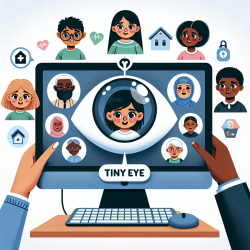As practitioners, we are always on the lookout for effective strategies to help our students with Asperger Syndrome navigate the complexities of social interactions. The research article "Asperger Syndrome: Strategies for solving the social puzzle" by Nancy J. Kaufman and Vicki Lord Larson offers a treasure trove of practical strategies that can significantly enhance our approach to supporting these students.
Here are some key takeaways and actionable strategies from the research that you can implement in your practice:
1. Identification and Assessment
Early and accurate identification of Asperger Syndrome is crucial. The research highlights the importance of comprehensive assessments that consider both strengths and challenges. Utilize a combination of observational data, standardized tests, and input from parents and teachers to create a holistic profile of the student.
2. General Intervention Strategies
The book outlines several general intervention strategies that can be tailored to individual needs:
- Visual Supports: Use visual schedules, social stories, and cue cards to help students understand social norms and expectations.
- Structured Routines: Establish consistent routines to provide a sense of predictability and reduce anxiety.
- Explicit Teaching: Directly teach social skills through role-playing, modeling, and explicit instruction.
3. Social Competence Intervention Strategies
Developing social competence is a central focus. The research suggests the following strategies:
- Peer-Mediated Interventions: Pair students with socially competent peers who can model appropriate behaviors and provide support.
- Social Skills Groups: Create small groups where students can practice social interactions in a controlled environment.
- Emotion Labeling: Encourage students to label their own emotions and those of others to improve emotional intelligence.
4. Academic and Classroom Strategies
Supporting students with Asperger Syndrome in the classroom involves both academic and environmental adjustments:
- Modified Instruction: Adapt teaching methods to match the student's learning style. This may include breaking tasks into smaller steps and using clear, concise instructions.
- Classroom Environment: Create a sensory-friendly classroom environment by minimizing distractions and providing quiet spaces.
5. Sensory and Motor Intervention Strategies
Sensory processing difficulties are common in students with Asperger Syndrome. The research suggests:
- Sensory Integration Therapy: Work with occupational therapists to implement sensory integration techniques.
- Motor Skills Development: Incorporate activities that improve fine and gross motor skills, such as handwriting exercises and physical education.
6. Behavior Management Strategies
Effective behavior management is essential for creating a supportive learning environment:
- Positive Reinforcement: Use positive reinforcement to encourage desired behaviors.
- Behavioral Interventions: Develop individualized behavior intervention plans that address specific challenges.
By implementing these strategies, practitioners can create a more inclusive and supportive environment for students with Asperger Syndrome. Additionally, the research encourages ongoing professional development and further exploration of evidence-based practices.
To read the original research paper, please follow this link: Asperger Syndrome: Strategies for solving the social puzzle.










